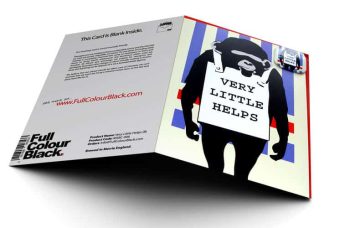Activism takes on many forms. Currently, the world is watching as thousands band together to call for justice and reform after a white police officer in Minneapolis murdered George Floyd, a black man accused of using a counterfeit bank note, as three other officers stood by idly. In cities across the US and elsewhere, people have taken to the streets, others have donated to organizations, people have lent an ear or been a shoulder to lean on, and still, many have responded with art.
Art has a long history with activist movements of every kind and, in many cases, the art created to spread information and awareness are what linger when the day is done and protesters head home. According to Tate Galleries, the activist art is created to offer a “form of political or social currency, actively addressing cultural power structures rather than representing them or simply describing them.” Ai Weiwei, Favianna Rodriguez, The Guerrilla Girls, Shepard Fairey, Paul Nicklen, Nan Goldin, Dadaists, Keith Haring, Diego Rivera, Kara Walker, Edgar Heap of Birds, and many more artists and artists groups have created such currencies through their art, visual and otherwise.
Museums and galleries have highlighted the posters, photographs, poems, and novels that have been the outcome of unrest. Just last year, the Victoria and Albert Museum began collecting artworks and items used by climate change activists to document living history. Earlier this year, protesters at the British Museum made a wooden Trojan Horse used during their demonstration against the museum’s ongoing relationship with BP. Their symbolism and words become a touchstone for those searching for inspiration, resolve, and comfort during uprisings. Old works, like Zoe Leonard’s 1992 poem I Want a President, are revived when society needs a reminder of the steps we’ve made and how much further we have to go. Themes of unity, despair, anguish, love, frustration, and exhaustion become prevalent in works from most any movement and are prevalent in today’s protests.
In light of recent and ongoing events, we’re highlighting works by some of the most influential artists, past and present, whose works are meant to serve an activist purpose. This is in no way an exhaustive list of those that might speak to you and the issues you hold near, but they are a tool in the fight to find common ground, unify, grow, and develop as members of our own communities.
Print by Gary Taxali whose works feature themes of frustration among others.
A silhouette by Kara Walker, whose works reflect issues of race, gender, sexuality, violence, and identity.

In his oeuvre, Edgar Heap of Birds often addressed lived experience of Native American peoples.

Nan Goldin began photographing her life in the 1980s and her subsequent portraiture highlighted life within the LGBTQ community, documented the AIDS epidemic, as well as the opioid crisis.

3/16″ (39.4 × 58.9 cm). The Museum of Modern Art, New York. Acquired through the generosity of Jon L. Stryker. © 2016 Nan Goldin
A poster presented by Amplifier Art, an arts organization seeking to boost Grassroots movements
Ai Weiwei, a Chinese artist in exile, creates works that centre on social issues and are often critical of the Chinese government.

“Dropping a Han Dynasty Urn,” 1995.
Formed in 1985, The Guerrilla Girls is an anonymous group of female, feminist artists who worked to highlight sexism and racism within the art world.

Portuguese artist Paula Rego created artworks that portrayed life in Portugal but her series The Abortion Pastels created a particularly poignant image

Keith Haring created works that turned into activist works supporting safe sex during the AIDS crisis.

Nature photographer Paul Nicklen uses his works to raise awareness of climate change and its affects on the globe and the animals that call it home.
Edited: June 12, 2020 for spelling error.





